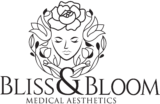IPL Photofacial
IPL, or Intense Pulsed Light, photofacial is a non-invasive skin treatment that uses high-intensity pulses of visible light to improve the appearance of various skin conditions.
Here’s a breakdown of what an IPL photofacial involves:
- Purpose: The primary purpose of IPL photofacial treatment is to improve the color and texture of your skin without surgery. It can undo some of the visible damage caused by sun exposure — called photoaging.
- Conditions treated: It is used to treat a range of skin conditions listed below:
- Age Spots
- Sun Spot
- Liver Spots
- Hyperpigmentation
- Pigmented Acne Scarring
- Uneven Skin Tone
- Rosacea
- Broken Capillaries
- Spider Veins
- Redness or Skin Flushing
- Freckles
- Vascular Birthmarks (telangiectasias)
- Fine Lines and Wrinkles
- Enlarged Pores
- Acne-prone Skin
- Procedure: During the procedure, a handheld device is used to deliver multiple wavelengths of light to the skin. These light waves are precisely calibrated to target hemoglobin (red blood cells in the blood vessels) or melanin (the brown pigment in freckles and age spots). The light penetrates the skin and is absorbed by either hemoglobin or melanin resulting in damage to the vessel wall or fragmenting of melanin pigment. These tiny fragments of pigment are then removed by the body’s natural processes, improving the appearance of the skin.
- Safety and recovery: It’s considered safe for most skin types, but not all. Darker skin types may not be ideal candidates as they have a higher risk of discoloration. It’s crucial to consult with a skincare professional before pursuing this treatment. After treatment, the skin may appear red and flushed, but this usually subsides within a few hours. Over the following weeks, treated pigmentation and redness will slowly rise to the surface and slough off.
Remember, while IPL can offer significant benefits, it’s essential to protect your skin from the sun before and after treatment, as your skin will be sensitive to sunlight. Also, results vary from person to person, and multiple sessions might be needed for optimal outcomes.
WORKING DAYS: 10 am – 4 pm
WEEKEND: Contact Me
Face
$299Session
- 3 Sessions = $799
Neck
$199Session
- 3 Sessions = $529
Decollete + Chest
$299Session
- 3 Sessions = $799
Face + Neck
$399Session
- 3 Sessions = $1049
Face + Neck + Decollete + Chest
$499Session
- 3 Sessions = $1,299
Hands
150Session
- 3 Sessions = $399
Spot Treatment
119Session
- 3 Sessions = $299

